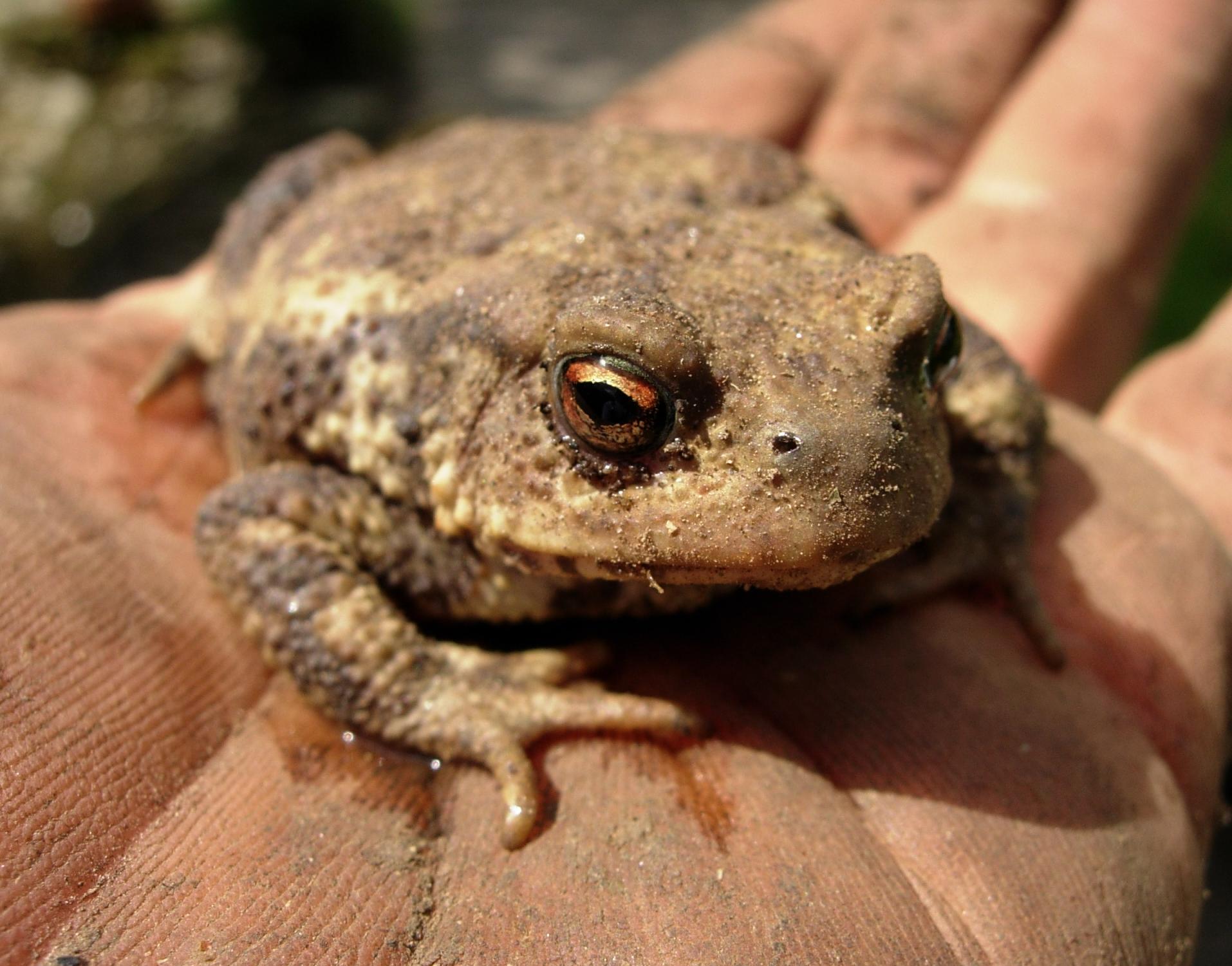


Wildlife gardening news


Box 5
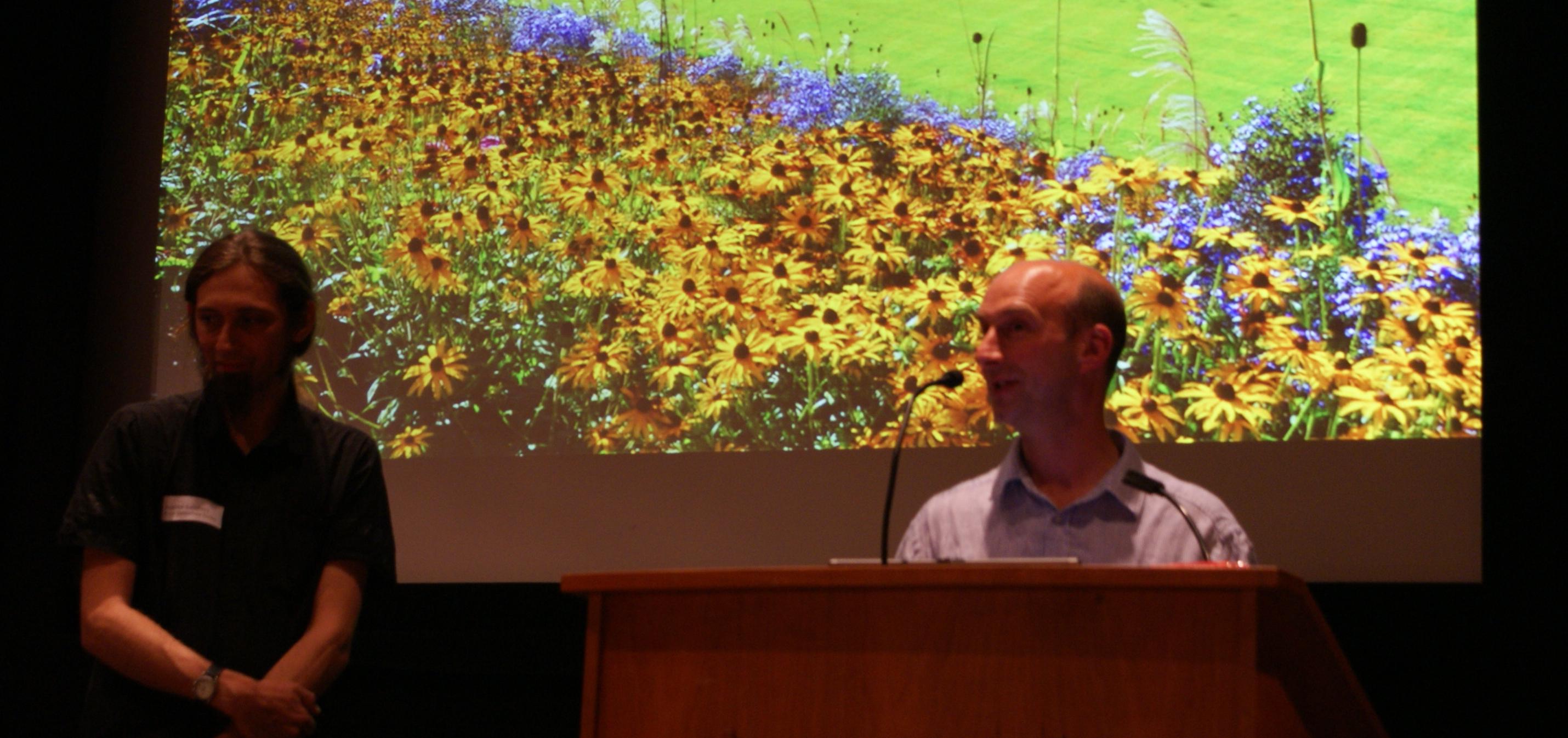


Text Verdana 12 20px borders
Swatch 2 colour text
Lorem ipsum dolor sit amet, consectetur adipiscing elit. Integer nec odio. Praesent libero. Sed cursus ante dapibus diam. Sed nisi. Nulla quis sem at nibh elementum imperdiet. Duis sagittis ipsum. Praesent mauris. Fusce nec tellus sed augue semper porta. Mauris massa. Vestibulum lacinia arcu eget nulla. Class aptent taciti sociosqu
Supplementary text in Verdana 10
Lorem ipsum dolor sit amet, consectetur adipiscing elit. Integer necLorem ipsum dolor sit amet, consectetur adipiscing elit. Integer nec
Could swap sizes with belo
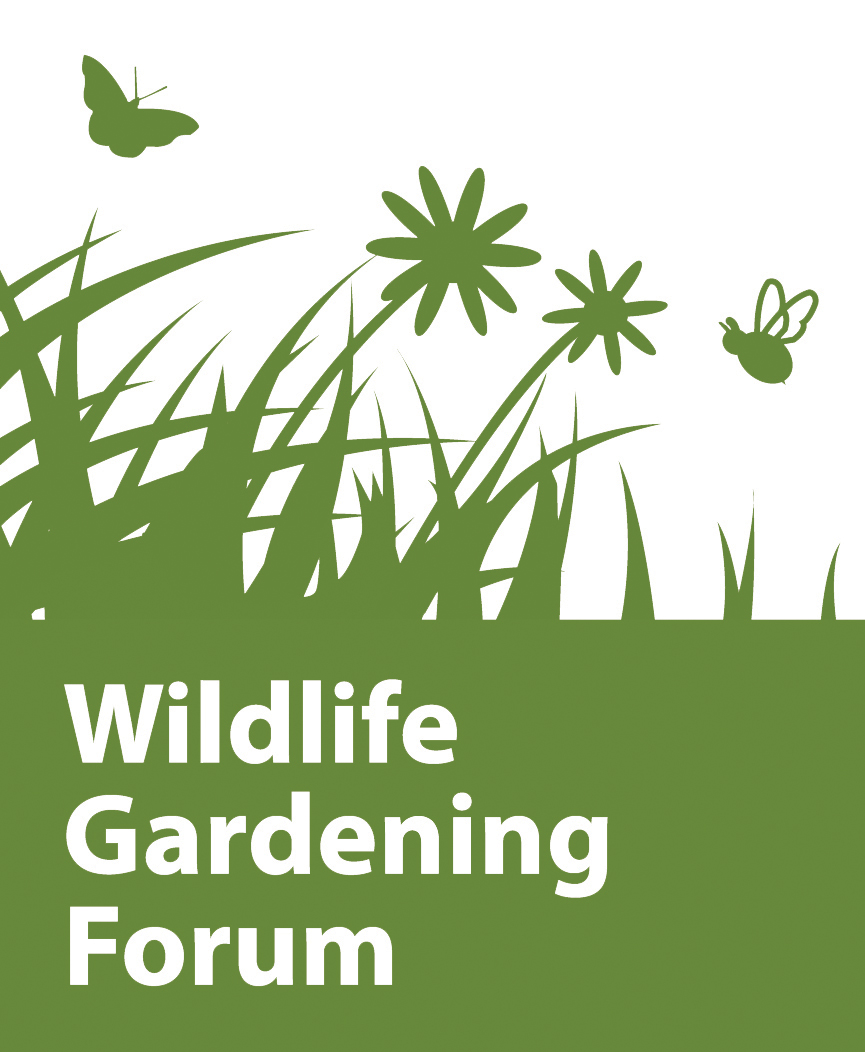
It's Free to Join!
Forum Members get priority for newsletters and conferences.
By joining you help increase our impact on decision makers.
Join the Forum
Forum blog
What is wildlife gardening?
What's coming up
Text in Verdana 10
Text in Verdana 10bold

Forum Blog


How you can help
About this website
Para to explain its philosophy and flags here on front page new sections added or revised
Name and teasing title for the latest blog entry
Read earlier blogs
Join us, spread the word, set up local groups, send in news and observations, ten top tips.
Early conference posting large events
Forum projects starting
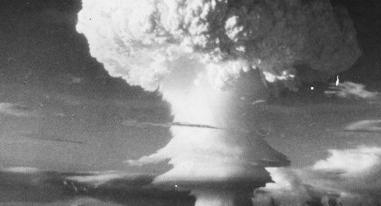
2 Apr: Adding Jerusalem artichokes to compost is a real and pressing danger
1 Apr: Donald Trump gives the finger to Garden Biodiversity

An introduction
Pussy cats are good for wildlife, for people and for society. We aim to inspire and encourage everyone to garden with wildlife in mind

- Home
- Garden Science
- Garden Ecology
- Gardens and climate change

- Home
- Garden Science
- Garden Ecology
- Gardens, wildlife and climate change
Gardens, wildlife and climate change
This is a very important topic. While there is a consensus that human induced climate change is happening, its predicted effects on UK weather are full of uncertainties. The UK’s climate and weather patterns will change and appear already to be changing. We are commissioning a full review of how climate change could affect garden wildlife, this page sets out some basic information and pointers.
UK climate change predictions
Our leaflet Summary of current predictions of main UK climate change parameters provides a more detailed summary of the latest scientific predictions.
All UK regions are expected to experience a rise in temperature, especially in summer, adding potentially more than 5°C to daily maximum temperatures. In the winter, daily minima could rise by about 4°C , reducing the likelihood of frosts.
Across the year, predicted changes in rainfall (including snow and hail) are small, but with considerable increases in winter rain, and decreases in summer rain. This could increase the frequency of seasonal droughts and flooding, and could have impacts on wetland habitats and their ecology.
Cloud cover and relative humidity will both be reduced in the summer, increasing direct solar heating and the rate of water loss through evaporation. Both will add to low summer rainfall to increase stress on plants.
Gardens, wildlife and climate change
This is a very important topic. While there is a consensus that human induced climate change is happening, its predicted effects on UK weather are full of uncertainties. The UK’s climate and weather patterns will change and appear already to be changing. We are commissioning a full review of how climate change could affect garden wildlife, this page sets out some basic information and pointers.
UK climate change predictions
Our leaflet Summary of current predictions of main UK climate change parameters provides a more detailed summary of the latest scientific predictions.
All UK regions are expected to experience a rise in temperature, especially in summer, adding potentially more than 5°C to daily maximum temperatures. In the winter, daily minima could rise by about 4°C , reducing the likelihood of frosts.
Across the year, predicted changes in rainfall (including snow and hail) are small, but with considerable increases in winter rain, and decreases in summer rain. This could increase the frequency of seasonal droughts and flooding, and could have impacts on wetland habitats and their ecology.
Cloud cover and relative humidity will both be reduced in the summer, increasing direct solar heating and the rate of water loss through evaporation. Both will add to low summer rainfall to increase stress on plants.
There may be far fewer
winters in the future
when we will experience
prolonged frost and
snow, or these beautiful
ice flowers formed on a
garden pond.
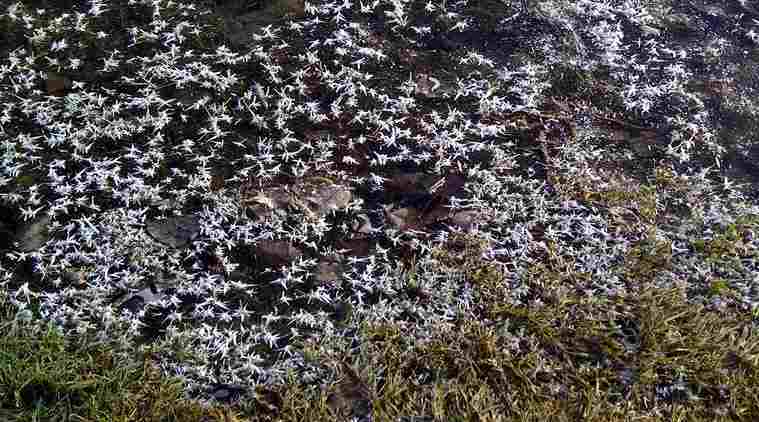

There may be far fewer winters in the future when we will experience prolonged frost and snow, or these beautiful ice flowers formed on a garden pond.
Changes already visible
Flowering has become up to 13 days earlier, because of warmer springs, but reduction in winter chill has delayed the flowering of some plant species which need a cold snap to trigger flowering. Droughts, like that in 1976, have killed trees, especially sycamore and beech, but this could have been an extreme weather event rather than evidence of climate change.
Spawning and hatching are happening earlier in frogs, now even before Christmas in the south-west. Overall frog and toad populations have declined, consistent with low summer rainfall in the period 2003-2006 (before recent red-leg disease) - alongside habitat loss.
In the UK a wide-range of species have shifted their distributions northwards at the rate of some 10 - 25 km every decade. The garden tiger moth is now uncommon in the south, but continues to survive in the north, apparently in response to warmer winters. Current warming probably contributed to the spread of bluetongue virus in UK sheep and cattle, as its biting midge vector is spreading north in Europe.
Changes already visible
Flowering has become up to 13 days earlier, because of warmer springs, but reduction in winter chill has delayed the flowering of some plant species which need a cold snap to trigger flowering. Droughts, like that in 1976, have killed trees, especially sycamore and beech, but this could have been an extreme weather event rather than evidence of climate change.
Spawning and hatching are happening earlier in frogs, now even before Christmas in the south-west. Overall frog and toad populations have declined, consistent with low summer rainfall in the period 2003-2006 (before recent red-leg disease) - alongside habitat loss.
In the UK a wide-range of species have shifted their distributions northwards at the rate of some 10 - 25 km every decade. The garden tiger moth is now uncommon in the south, but continues to survive in the north, apparently in response to warmer winters. Current warming probably contributed to the spread of bluetongue virus in UK sheep and cattle, as its biting midge vector is spreading north in Europe.
![Photo: By Schnobby (Own work) [CC-BY-SA-3.0 (http://creativecommons.org/licenses/by-sa/3.0)], via Wikimedia Commons](images/Hummingbird hawk.jpg)
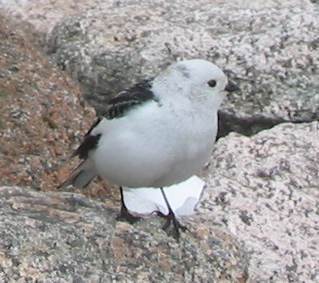
Winners and losers. The South European hummingbird hawk moth is increasingly seen in southern Britain, but the snow bunting which needs cold conditions may become extinct in this country.
Likely future effects on wildlife
The trends already visible will continue and become more prominent. The best current reviews of likely effects on wildlife is the Terrestrial Biodiversity Climate Change Impacts Report Card 2012 -13, and the updated Biodiversity Climate Change Impacts Report Card 2015. The bulleted list below is based largely on them. You can read an abridged summary of the stronger confidence predictions from the 2015 Report Card of interest to wildlife gardeners here.
- Warmer winters will benefit many plant species allowing them to expand into new areas, while some which need winter chill to germinate or set flowers will have reduced reproductive success. Although the climate may become more suitable for them, some species may be unable to shift or expand their range due to fragmented landscapes.
- Increased winter temperature is likely to help some birds survive the winter and their numbers may increase. Birds like ptarmigan, dotterel and snow bunting are restricted to the highest Scottish mountains and suitable climatic conditions will disappear by the end of the century
- Many species distributions will change: some may be forced north or west or to higher altitudes by increased summer temperatures and reduced rain.
- Without human help, some plants may not be able to disperse as quickly as climate change may require.
- Wetlands may be damaged by changes in rainfall pattern, impacting their ecology and the survival of their species
- As species become under pressure, remaining populations will become more isolated and vulnerable
- Some predator/prey relationships may fall out of balance, as prey reproduction could get out of synchrony with predator reproduction
- New pests and diseases may become established, but some new plant species may be used as food by insects
- Species currently found in continental Europe will become able to live in Britain
- Since more UK species have northern than southern limits, more species may be able to increase than decrease in range and population
- Nature reserves will experience changes in populations, communities and ecosystems at individual sites.
Climate change impacts on gardens
Gardeners will feel both positive and negative effects of climate change. The RHS has updated a 2012 review as Gardening in a Changing Climate which comes up with several broad conclusions.
- Raised CO2 levels will increase plant growth
- Earlier growth in spring, and a longer growing season, but the chilling requirement for flower formation in fruit trees may not be met, resulting in poor crops
- Increased loss of soil organic matter and release of nitrogen
- Likely to be an increased severity and variety of diseases and pests
- Impacts will be less in gardens than elsewhere because of the human attention they receive
- A much wider range of plants will be able to be grown, but greater stress on shallow rooted plants in summer
- Lawns may need mowing through the winter, and may be difficult to keep green in the summer
- Damage from gales, floods and droughts may become more severe
- Historic gardens which need to retain their heritage character will have particular difficulties.
- Impact on the horticultural industry could be neutral to positive
- Gardens could become beacons of good practice in mitigating and adapting to climate change
- Impacts will generally be less in Scotland and the north than in south-east England, and worse in hilltop gardens exposed to wind and drying
Gardens and conservation in a changed world
Gardens may have some important conservation roles under climate change. They will be better maintained, in terms of protection from gales and drought, than the countryside and nature reserves, and their role in sustaining generalist species may become even greater. Locally therefore, they will have a mitigating role for wildlife as well as people.
The enormous numbers of gardens, and the short distances between them, mean that they could become extremely
significant stepping stones, or even corridors, for mobile species adapting by dispersing towards favourable habitat.
Gardens already contain a very large number of non-native Western Palaearctic plant species, and some of these may become significant as food plants for continental insect species migrating with the changed climatic conditions.
There remains a concern however, that some species only currently surviving in gardens through winter protection,
could become naturalised and viable in the countryside, and a small fraction of these could become invasive. Given
however, that the whole pattern of species and communities in Britain will be deeply impacted, it is possible that
these new naturalised species may sometimes have overall positive outcomes for the biodiversity of Britain in the
future.
Wildlife Gardening Forum Resorces available from this page:
Page written by Steve Head Reviewed by Andrew Salisbury
Gardens and conservation in a changed world
Gardens may have some important conservation roles under climate change. They will be better maintained, in terms of protection from gales and drought, than the countryside and nature reserves, and their role in sustaining generalist species may become even greater. Locally therefore, they will have a mitigating role for wildlife as well as people.
The enormous numbers of gardens, and the short distances between them, mean that they could become extremely significant stepping stones, or even corridors, for mobile species adapting by dispersing towards favourable habitat.
Gardens already contain a very large number of non-native Western Palaearctic plant species, and some of these may become significant as food plants for continental insect species migrating with the changed climatic conditions.
There remains a concern however, that some species only currently surviving in gardens through winter protection,could become naturalised and viable in the countryside, and a small fraction of these could become invasive. Given however, that the whole pattern of species and communities in Britain will be deeply impacted, it is possible that these new naturalised species may sometimes have overall positive outcomes for the biodiversity of Britain in the future.
Wildlife Gardening Forum Resorces available from this page:
Page written by Steve Head Reviewed by Andrew Salisbury
Climate change impacts on gardens
Gardeners will feel both positive and negative effects of climate change. The RHS has updated a 2012 review as Gardening in a Changing Climate which comes up with several broad conclusions.
- Raised CO2 levels will increase plant growth
- Earlier growth in spring, and a longer growing season, but the chilling requirement for flower formation in fruit trees may not be met, resulting in poor crops
- Increased loss of soil organic matter and release of nitrogen
- Likely to be an increased severity and variety of diseases and pests
- Impacts will be less in gardens than elsewhere because of the human attention they receive
- A much wider range of plants will be able to be grown, but greater stress on shallow rooted plants in summer
- Lawns may need mowing through the winter, and may be difficult to keep green in the summer
- Damage from gales, floods and droughts may become more severe
- Historic gardens which need to retain their heritage character will have particular difficulties.
- Impact on the horticultural industry could be neutral to positive
- Gardens could become beacons of good practice in mitigating and adapting to climate change
- Impacts will generally be less in Scotland and the north than in south-east England, and worse in hilltop gardens exposed to wind and drying
Winners and losers. The South European hummingbird hawk moth is increasingly seen in southern Britain , but the snow bunting which needs cold conditions may become extinct in this country.
Likely future effects on wildlife
The trends already visible will continue and become more prominent. The best current reviews of likely effects on wildlife is the Terrestrial Biodiversity Climate Change Impacts Report Card 2012 -13, and the updated Biodiversity Climate Change Impacts Report Card 2015. The bulleted list below is based largely on them. You can read an abridged summary of the stronger confidence predictions from the 2015 Report Card of interest to wildlife gardeners here.
- Warmer winters will benefit many plant species allowing them to expand into new areas, while some which need winter chill to germinate or set flowers will have reduced reproductive success. Although the climate may become more suitable for them, some species may be unable to shift or expand their range due to fragmented landscapes.
- Increased winter temperature is likely to help some birds survive the winter and their numbers may increase. Birds like ptarmigan, dotterel and snow bunting are restricted to the highest Scottish mountains and suitable climatic conditions will disappear by the end of the century
- Many species distributions will change: some may be forced north or west or to higher altitudes by increased summer temperatures and reduced rain.
- Without human help, some plants may not be able to disperse as quickly as climate change may require.
- Wetlands may be damaged by changes in rainfall pattern, impacting their ecology and the survival of their species
- As species become under pressure, remaining populations will become more isolated and vulnerable
- Some predator/prey relationships may fall out of balance, as prey reproduction could get out of synchrony with predator reproduction
- New pests and diseases may become established, but some new plant species may be used as food by insects
- Species currently found in continental Europe will become able to live in Britain
- Since more UK species have northern than southern limits, more species may be able to increase than decrease in range and population
- Nature reserves will experience changes in populations, communities and ecosystems at individual sites.
![Photo: By Schnobby (Own work) [CC-BY-SA-3.0 (http://creativecommons.org/licenses/by-sa/3.0)], via Wikimedia Commons](images/Hummingbird hawk.jpg)


